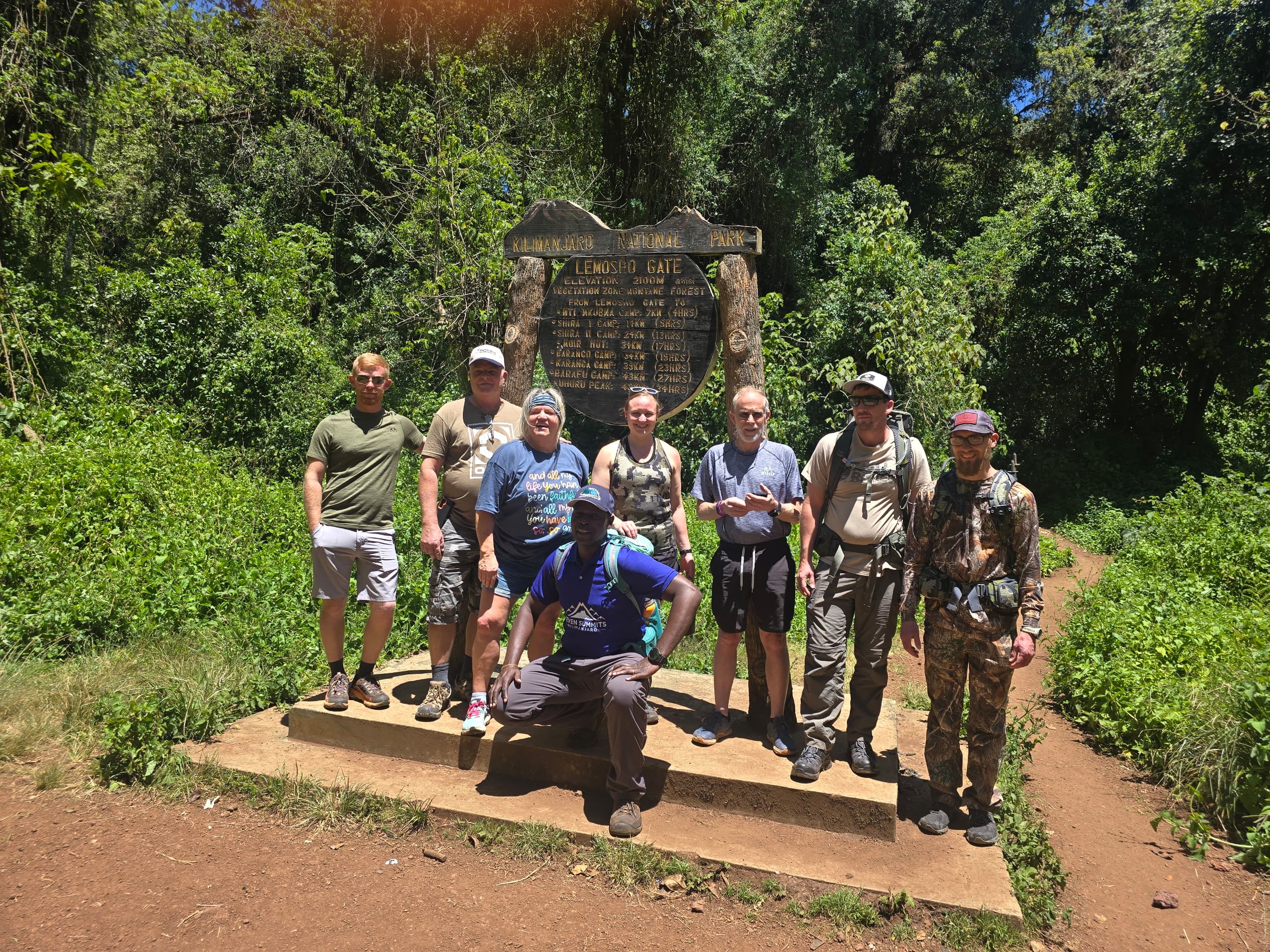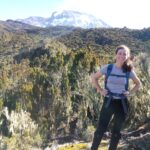Mount Kilimanjaro, the highest peak in Africa and one of the world’s most iconic trekking destinations, offers a variety of routes to the summit. Each path has its own unique features, challenges, and scenic highlights, making it essential for trekkers to choose the route that best suits their goals, fitness level, and preferences. In this complete guide, we’ll explore the pros, cons, and highlights of the most popular Kilimanjaro hiking routes to help you make an informed decision.
Overview of Kilimanjaro’s Hiking Routes
There are seven main routes to reach the summit of Mount Kilimanjaro, each offering distinct experiences:
- Marangu Route
- Machame Route
- Lemosho Route
- Rongai Route
- Northern Circuit
- Umbwe Route
- Shira Route
Marangu Route: The “Coca-Cola Route”
The Marangu Route is one of the oldest and most popular routes on Kilimanjaro. Known for its well-defined path and hut accommodations, it is often considered the easiest route to the summit.
Pros:
- Hut Accommodations: The only route with dormitory-style huts, offering a roof over your head and a bed to sleep on.
- Shorter Duration: Typically completed in 5-6 days, making it an option for those with limited time.
- Easy to Navigate: A straightforward trail, suitable for first-time climbers.
Cons:
- Lower Success Rate: The shorter duration can result in poor acclimatization, leading to a lower success rate.
- Crowded: One of the busiest routes, especially during peak seasons.
Highlights:
- Stunning views of Kibo and Mawenzi peaks.
- Accessible year-round.
Machame Route: The “Whiskey Route”
The Machame Route is a favorite for those seeking a more scenic, adventurous journey. It’s slightly longer than Marangu, offering better acclimatization and higher summit success rates.
Pros:
- Scenic Beauty: Passes through diverse landscapes, including lush rainforests, moorlands, and alpine deserts.
- Good Acclimatization: The “climb high, sleep low” strategy improves acclimatization.
Cons:
- Camping Required: No huts are available; climbers must camp along the route.
- Steep Terrain: Some challenging sections, particularly the Barranco Wall.
Highlights:
- The scenic Shira Plateau.
- The challenging but rewarding Barranco Wall.
Lemosho Route: The Most Scenic Path
The Lemosho Route is widely regarded as the most beautiful route on Kilimanjaro. It offers an extended trek with plenty of time for acclimatization, making it a popular choice for those who can spare the time.
Pros:
- Best for Acclimatization: Longer duration (7-8 days) increases the chances of summit success.
- Scenic Views: Less crowded, with stunning panoramic views and diverse wildlife.
Cons:
- Longer Duration: Requires more days on the mountain, which can be costly.
- Remote Start: The starting point is farther away, leading to higher transport costs.
Highlights:
- Pristine wilderness and remote paths.
- Incredible views of the Shira Plateau and Western Breach.
Rongai Route: The Northern Route
The Rongai Route approaches Kilimanjaro from the northern side, offering a drier and quieter trek. It’s the only route that starts near the Kenyan border.
Pros:
- Less Crowded: A quieter route with fewer climbers.
- Drier Conditions: Ideal for climbing during the rainy season.
Cons:
- Less Scenic: While offering beautiful views, the landscape is not as diverse as other routes.
- Limited Acclimatization: Fewer “climb high, sleep low” opportunities.
Highlights:
- Wildlife sightings near the starting point.
- Unique views of Mawenzi peak and a different perspective of Kilimanjaro.
Northern Circuit: The Longest and Most Successful Route
The Northern Circuit is the newest and longest route on Kilimanjaro. It circles around the quieter northern slopes, offering an unparalleled experience with high summit success rates.
Pros:
- Best Acclimatization: The longest route (9-10 days), providing ample time to adjust to the altitude.
- Scenic Isolation: Less crowded, with breathtaking 360-degree views of the mountain.
Cons:
- Time-Consuming: Requires a longer time commitment.
- Cost: Typically more expensive due to the extended duration.
Highlights:
- Panoramic views from the northern side.
- Best route for those prioritizing safety and success.
Umbwe Route: The Steepest and Shortest Route
The Umbwe Route is the shortest and steepest route on Kilimanjaro. It’s known for its challenging ascent and is recommended only for experienced climbers.
Pros:
- Quick Ascent: Ideal for those who want a fast, intense climb.
- Less Crowded: A quieter route with fewer climbers.
Cons:
- Poor Acclimatization: Rapid ascent leaves little time for acclimatization.
- Challenging Terrain: Extremely steep and physically demanding.
Highlights:
- Direct and challenging path to the summit.
- Stunning views of the Great Barranco Wall.
Shira Route: Scenic but Less Popular
The Shira Route begins on the western side of Kilimanjaro and is similar to the Lemosho Route. It’s less popular due to the higher starting point, which can pose acclimatization challenges.
Pros:
- Beautiful Landscapes: Offers stunning scenery, particularly around the Shira Plateau.
- Shorter Option: Can be completed in fewer days compared to the Lemosho Route.
Cons:
- Higher Starting Altitude: Increases the risk of altitude sickness if not properly acclimatized.
- Less Popular: Fewer guides and companies offer this route.
Highlights:
- Expansive views of the Shira Plateau.
- A scenic alternative to Lemosho for those short on time.
Choosing the Right Kilimanjaro Route for You
Selecting the best Kilimanjaro route depends on several factors, including:
- Experience Level: If you’re a beginner, consider routes with better acclimatization, like the Lemosho or Northern Circuit.
- Duration: If you have limited time, the Marangu or Machame routes offer shorter options.
- Budget: Longer routes typically cost more due to additional days on the mountain.
- Season: If climbing during the rainy season, opt for drier routes like the Rongai.
- Fitness Level: Experienced climbers seeking a challenge may prefer the Umbwe Route, while those wanting a more leisurely pace might enjoy Lemosho or the Northern Circuit.
Finding Your Ideal Kilimanjaro Route
Each Kilimanjaro route offers unique advantages and challenges. Whether you’re seeking a scenic, leisurely journey or a fast-paced, challenging climb, there’s a route that will fit your needs. Proper research, preparation, and choosing the right route are crucial steps toward a successful summit.
For a safe and unforgettable Kilimanjaro experience, consider partnering with reputable and experienced companies like Seven Summits Kilimanjaro, who offer expert guidance and support tailored to each route







